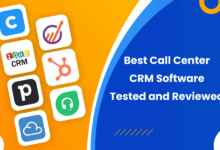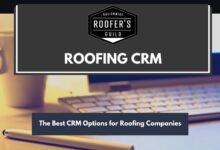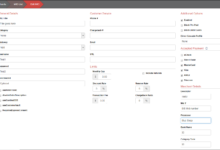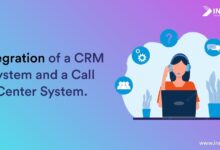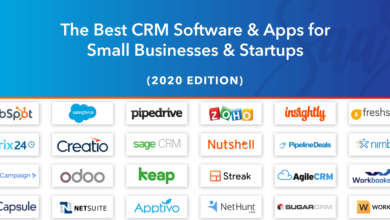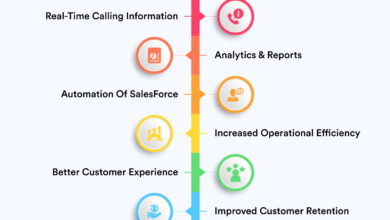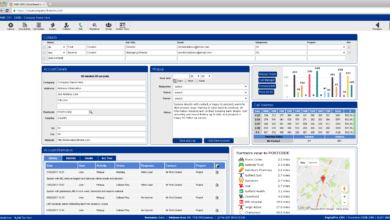CRM Demo: A Comprehensive Guide
CRM Demo: Mastering the art of the CRM demo involves far more than simply showcasing software features. It’s about crafting a compelling narrative, understanding your audience, and addressing their specific needs. This guide explores various demo formats, from live presentations to pre-recorded videos, highlighting best practices for each. We’ll delve into the technical aspects, ensuring a smooth and engaging experience for your potential clients, and provide strategies for converting demo attendees into paying customers.
We’ll cover everything from designing a captivating story arc and handling unexpected technical issues to creating effective follow-up emails and gathering valuable feedback. By the end, you’ll possess the tools and knowledge to deliver highly effective CRM demos that resonate with your target audience and drive sales.
Understanding CRM Demo Variations
Choosing the right CRM demo format is crucial for effectively showcasing your software’s capabilities and converting prospects into customers. Different demo styles cater to varying audience needs and preferences, impacting the overall success of your sales process. Understanding these variations and their strengths is key to maximizing your demo’s impact.
Types of CRM Demos
CRM demos come in several forms, each with its own advantages and disadvantages. The three primary types are live demos, pre-recorded demos, and personalized demos. Live demos involve a real-time presentation by a sales representative, pre-recorded demos utilize a previously filmed presentation, and personalized demos are tailored to a specific prospect’s needs and industry.
Effectiveness of Different Demo Formats for Various Audiences
The ideal demo format depends heavily on the audience. Live demos are generally preferred for high-value prospects or those who require immediate interaction and personalized attention. They allow for real-time Q&A and a more engaging experience. Pre-recorded demos are efficient for large-scale outreach or when demonstrating basic features to a broader audience. Personalized demos are best suited for complex sales cycles or prospects with unique requirements, showcasing the CRM’s flexibility and adaptability.
Key Features to Highlight in Each Demo Type
The specific features emphasized should align with the demo type and target audience. Live demos can showcase the CRM’s intuitive interface and advanced functionalities through live interaction. Pre-recorded demos are ideal for highlighting key features and benefits concisely, focusing on the software’s core value proposition. Personalized demos should emphasize features directly relevant to the prospect’s industry, business size, and specific pain points.
Comparison of CRM Demo Types
| Demo Type | Advantages | Disadvantages | Best Suited For |
|---|---|---|---|
| Live Demo | High engagement, real-time interaction, personalized Q&A, addresses specific concerns immediately. | Time-consuming, requires skilled presenter, less scalable, scheduling challenges. | High-value prospects, complex sales cycles, needs for immediate interaction. |
| Pre-recorded Demo | Cost-effective, scalable, consistent messaging, easily accessible, can be reused. | Less engaging, limited interaction, cannot address specific questions immediately, may not be personalized. | Large-scale outreach, initial lead qualification, showcasing basic functionalities. |
| Personalized Demo | Highly relevant, addresses specific needs, increased engagement, builds stronger relationships. | Requires significant preparation, less scalable, potentially time-intensive. | Complex sales cycles, high-value prospects with unique requirements, specific industry needs. |
Crafting a Compelling CRM Demo Narrative
A successful CRM demo transcends a mere software demonstration; it’s a compelling narrative showcasing how the software solves a specific customer problem and improves their business. The key is to weave a story that resonates with the audience, highlighting the value proposition in a clear and engaging manner. This involves strategic planning, skillful presentation, and proactive anticipation of potential concerns.
A well-structured demo follows a clear arc, much like a compelling story. It begins with a relatable problem, progresses through the solution (the CRM), and concludes with a clear visualization of the positive outcomes. This approach keeps the audience engaged and invested in the process.
Story Arc Design for a CRM Demo
The ideal CRM demo story arc begins by establishing a common pain point many businesses face. For example, “Many sales teams struggle with inefficient lead management, leading to lost opportunities and reduced revenue.” This immediately establishes relevance. The demo then introduces the CRM as the solution, showing how its features directly address the identified problem. Specific features, such as lead scoring, automated email sequences, and sales pipeline visualization, are demonstrated, showcasing their impact on efficiency and revenue generation. Finally, the demo concludes by projecting the positive impact of adopting the CRM – quantifiable improvements in sales performance, increased customer satisfaction, and streamlined workflows. This visual representation of success solidifies the value proposition.
Effective Opening and Closing Statements
An effective opening statement should immediately capture attention and establish the demo’s purpose. For example, “Today, we’ll show you how [CRM Name] can help your sales team close more deals and boost revenue by [quantifiable percentage] within [timeframe].” This sets clear expectations and promises tangible results. The closing statement should reiterate the key benefits and call to action. A strong closing might be: “As you’ve seen, [CRM Name] offers a powerful solution to [problem]. We’re confident it can significantly improve your business. Let’s discuss how we can tailor a solution to your specific needs.”
Maintaining Audience Engagement
Maintaining audience engagement requires a dynamic and interactive approach. Instead of a passive presentation, actively involve the audience by asking targeted questions related to their business challenges. Visual aids such as charts and graphs showcasing improvements are crucial. Real-world case studies illustrating successful CRM implementations add credibility and relatability. Furthermore, demonstrating the CRM’s user-friendliness through intuitive navigation and easy-to-understand functionalities keeps the audience interested and encourages participation.
Proactive Objection Handling
Addressing potential objections proactively is vital. Anticipate common concerns, such as cost, implementation complexity, or integration challenges. During the demo, directly address these concerns by presenting clear and concise answers. For example, if the cost is a concern, showcase the CRM’s return on investment (ROI) through quantifiable metrics. If implementation complexity is a concern, demonstrate the ease of setup and provide support resources. By proactively addressing objections, you build trust and overcome potential barriers to adoption.
Technical Aspects of a Successful CRM Demo
A successful CRM demo hinges not only on a compelling narrative but also on flawless technical execution. A smooth, glitch-free demonstration builds trust and showcases the CRM’s true capabilities. Conversely, technical difficulties can derail the entire presentation and leave a negative impression. This section focuses on the crucial technical elements for a successful CRM demo.
Seamless Integration with Other Business Tools
Demonstrating seamless integration with other business tools is vital. This showcases the CRM’s value beyond its core functionality. For example, a live demonstration of data flowing effortlessly between the CRM and marketing automation software, accounting software, or e-commerce platforms underscores the CRM’s ability to streamline workflows and improve overall business efficiency. A visual representation, such as a screen showing data updates in real-time across multiple platforms, would be highly effective. Imagine showing how a new customer added in the CRM automatically creates a contact in the marketing automation system, triggering a welcome email sequence. This illustrates the power of interconnected systems and enhances the demo’s persuasiveness.
Potential Technical Glitches and Mitigation Strategies
Predicting and preventing technical glitches is crucial. Network connectivity issues, software bugs, and unexpected data errors are common potential problems. To mitigate these, thorough pre-demo testing is essential. This includes testing the internet connection, verifying software updates, and ensuring the CRM database is functioning correctly. Having backup plans, such as alternative internet access or pre-recorded demonstration segments for particularly complex features, is also wise. A checklist should be created and followed meticulously before each demo. For instance, if a specific integration is crucial, testing its functionality multiple times prior to the presentation is essential to avoid surprises. Anticipating potential problems and having solutions ready demonstrates professionalism and competence.
Step-by-Step Guide for a Smooth and Error-Free Demo
A well-structured demo process minimizes the risk of technical issues. Begin with a clear agenda and stick to it. Start with a simple login, then move to progressively complex features. This approach allows for early identification of any technical problems. Ensure that all data used in the demo is accurate and representative of real-world scenarios. If using sample data, ensure it is clean and consistent. Prepare a concise script, outlining each step of the demonstration, to maintain focus and avoid digressions. Regularly check for questions from the audience, but maintain control of the pace to prevent the demo from becoming disorganized. Following a pre-determined structure and script, along with regular checks, ensures a seamless flow.
Handling Unexpected Technical Issues During a Live Demo
Even with thorough preparation, unexpected technical issues can arise. Having a calm and professional demeanor is critical. Acknowledge the problem transparently, offering a brief, sincere apology. Avoid technical jargon and focus on reassuring the audience. If the issue is minor and quickly resolvable, address it directly. If it’s more complex, offer to follow up with a detailed explanation or a separate, more comprehensive demonstration at a later time. Having a backup plan in place, such as a pre-recorded video demonstrating the problematic feature, allows you to continue the demo without significant disruption. Maintaining composure and professionalism during unexpected hiccups is essential for preserving credibility.
Post-Demo Follow-Up Strategies
A successful CRM demo is only half the battle. Converting demo attendees into paying customers requires a well-structured and timely follow-up strategy. This involves nurturing leads through targeted communication, addressing their specific needs and concerns, and ultimately guiding them towards a purchase decision. The key is to maintain consistent engagement and provide value beyond the initial demo.
Effective post-demo follow-up is crucial for maximizing your return on investment from the demo itself. A thoughtfully planned approach significantly increases the likelihood of converting prospects into paying customers. This involves a multi-faceted strategy encompassing email sequences, personalized communication, and feedback collection.
Follow-Up Email Sequence
A well-designed email sequence helps nurture leads and keeps your company top-of-mind. The sequence should be tailored to address common questions and concerns, providing additional information and resources to aid decision-making. Each email should have a clear purpose and call to action.
- Email 1 (Sent within 24 hours): A thank-you email reiterating key takeaways from the demo and offering additional resources like case studies or relevant blog posts. Call to action: Schedule a brief follow-up call to discuss specific needs.
- Email 2 (Sent 3-4 days later): Addresses a specific pain point mentioned during the demo, showcasing how the CRM solves that problem. Call to action: Download a whitepaper detailing the CRM’s capabilities in that area.
- Email 3 (Sent 7-10 days later): Highlights a customer success story relevant to the prospect’s industry or business size. Call to action: Request a personalized quote or pricing information.
- Email 4 (Sent 14 days later): A final email offering a limited-time discount or incentive to encourage a purchase. Call to action: Book a consultation with a sales representative.
Converting Demo Attendees into Paying Customers
Converting demo attendees hinges on understanding their needs and providing tailored solutions. This involves active listening during the demo, addressing concerns promptly, and demonstrating a clear return on investment. Personalization is key; generic emails are less effective.
Effective strategies include:
- Personalized follow-up calls: Addressing specific questions and concerns raised during the demo.
- Tailored proposals: Highlighting features and benefits most relevant to the prospect’s business.
- Case studies and testimonials: Demonstrating the CRM’s effectiveness in similar situations.
- Value-based selling: Focusing on the ROI and long-term benefits of the CRM.
Examples of Effective Call-to-Actions
Clear and concise call-to-actions (CTAs) are essential for guiding prospects towards the next step. Avoid vague or confusing language. Use strong verbs and create a sense of urgency when appropriate.
Examples of effective CTAs include:
- “Schedule a free consultation”
- “Request a personalized quote”
- “Download our case study”
- “Start your free trial today”
- “Get a demo with one of our experts”
Gathering Feedback and Improving Future Demos
Collecting feedback after each demo is crucial for continuous improvement. This helps identify areas for enhancement, address shortcomings, and ensure future demos are more effective. Feedback can be gathered through surveys, follow-up calls, or informal conversations.
Methods for gathering feedback include:
- Post-demo surveys: Asking attendees to rate their experience and provide suggestions for improvement.
- Follow-up calls: Discussing the demo and gathering feedback on specific aspects.
- Analyzing demo recordings: Identifying areas where the presentation could be improved.
Visual Aids and Presentation Design
Effective visual aids are crucial for a successful CRM demo. They help maintain audience engagement, clarify complex information, and leave a lasting impression. A well-designed presentation complements the spoken narrative, enhancing understanding and reinforcing key selling points. The following sections detail strategies for creating impactful visuals.
Visually Appealing CRM Feature Highlight Slide
This slide showcases the streamlined lead management feature within our CRM. The background is a subtle gradient of deep teal (#008080) transitioning to a lighter shade of aqua (#7FFFD4), evoking a sense of calm efficiency. The main heading, “Streamlined Lead Management,” is in a bold, clean sans-serif font like Open Sans, in white, with a slight drop shadow for readability. Below the heading, three key features are presented using icons (a funnel for lead capture, a clock for timely follow-up, and a chart for performance tracking). Each icon is accompanied by a concise bullet point description in a slightly smaller, but still easily readable, white Open Sans font. The icons are a muted grey, contrasting subtly against the background. A high-quality, stylized image of a team collaboratively working on laptops is subtly placed in the bottom-right corner, further emphasizing the collaborative aspect of the feature. The overall effect is clean, professional, and visually appealing, emphasizing efficiency and team collaboration.
Explainer Video Script: Advanced Segmentation Feature
This short video explains the CRM’s advanced segmentation feature. The video opens with upbeat, positive music fading slightly under the narration. The tone is friendly and conversational, maintaining a professional yet approachable style. The pacing is brisk but clear, avoiding overwhelming the viewer with information. The video utilizes simple, animated graphics to illustrate the process. The narrator explains: “Imagine effortlessly sorting your customer base into highly targeted groups. With our advanced segmentation, you can segment by demographics, purchase history, engagement levels, and more. See how easily you can create targeted marketing campaigns or personalize customer interactions, leading to higher conversion rates and stronger customer relationships.” The video then shows a quick, clear animation of the segmentation process, highlighting the ease of use and the various criteria. The video concludes with a call to action: “Learn more about maximizing your customer relationships with our advanced segmentation tool – schedule a personalized demo today!” Throughout, the visuals are clean, modern, and easily digestible, ensuring the complex feature is presented in a simple, engaging way.
Best Practices for Visuals in CRM Demos
Before diving into specific best practices, it’s important to remember that visual aids should always support and enhance, not distract from, your core message. Overusing visuals or employing overly complex designs can be counterproductive. The following bullet points outline essential guidelines:
- Keep it Simple: Avoid cluttered slides. Use clear, concise visuals that directly relate to the points you’re making.
- High-Quality Images: Use professional, high-resolution images and graphics. Avoid blurry or pixelated visuals.
- Consistent Branding: Maintain a consistent color palette, font style, and overall design aesthetic throughout the presentation.
- Data Visualization: Use charts and graphs to present data effectively. Keep them clean, easy to understand, and relevant.
- Less is More: Prioritize quality over quantity. A few well-crafted visuals are more effective than many poorly designed ones.
- Accessibility: Ensure your visuals are accessible to all audience members, including those with visual impairments. Use sufficient color contrast and alt text for images.
Addressing Specific Customer Needs in a CRM Demo
A successful CRM demo hinges on demonstrating its value within the unique context of the prospect’s business. Generic demonstrations rarely resonate; instead, tailoring the demo to specific industry needs, company size, and pre-identified pain points is crucial for securing a positive outcome. This involves careful planning and a deep understanding of the prospect’s challenges.
Effective CRM demos go beyond showcasing features; they illustrate how those features directly solve the prospect’s problems and improve their business processes. This requires a flexible approach, adaptable to the diverse needs of different clients.
CRM Demo Variations Across Industries
Tailoring a CRM demo for specific industries requires understanding the unique workflows and regulatory requirements of each sector. For example, a healthcare provider’s CRM needs will differ significantly from a retail business’s. A healthcare CRM demo might emphasize HIPAA compliance, patient record management, and appointment scheduling, showcasing features that ensure data security and streamline patient care. Conversely, a retail CRM demo would focus on inventory management, sales tracking, customer segmentation for targeted marketing, and loyalty program integration. A financial institution’s demo would highlight features related to regulatory compliance, risk management, and secure client data handling. By highlighting industry-specific use cases and demonstrating relevant features, the demo becomes much more impactful and persuasive.
CRM Demo Adaptations for Business Size
The approach to demonstrating CRM functionality varies considerably between small businesses and large enterprises. Small businesses often require a simpler, more streamlined solution focusing on ease of use and quick implementation. The demo should showcase how the CRM can automate basic tasks, improve customer communication, and provide a clear overview of key performance indicators (KPIs). In contrast, large enterprises require a more complex demonstration, showcasing scalability, integration capabilities with existing systems, advanced reporting and analytics, and robust security features. The demo might include examples of how the CRM handles large datasets, supports multiple users across different departments, and integrates with enterprise resource planning (ERP) systems. The focus shifts from simplicity to comprehensive functionality and robust infrastructure.
Customizing CRM Demos Based on Pre-Demo Discussions
Pre-demo conversations are invaluable for identifying specific pain points and tailoring the demonstration accordingly. If a prospect expresses concerns about lead management, the demo should prominently feature lead scoring, lead routing, and automated follow-up processes. If they struggle with customer retention, the demo should highlight features related to customer segmentation, personalized communication, and customer satisfaction tracking. By addressing these specific concerns directly, the demo becomes a targeted solution rather than a general overview, increasing the likelihood of securing a deal. For example, if a prospect mentions difficulty tracking sales performance across different sales teams, the demo should showcase custom dashboards and reports that provide detailed sales analytics, visualizing sales pipeline, conversion rates, and team performance. This direct response demonstrates a clear understanding of the prospect’s challenges and positions the CRM as a practical solution.
Outcome Summary
Ultimately, a successful CRM demo is a carefully orchestrated blend of technical proficiency, compelling storytelling, and genuine understanding of your audience’s needs. By implementing the strategies outlined in this guide—from meticulous planning and engaging presentation to effective follow-up—you can transform your CRM demos from mere product showcases into powerful sales tools. Remember, the goal isn’t just to demonstrate the software; it’s to build relationships and convert prospects into loyal customers.
